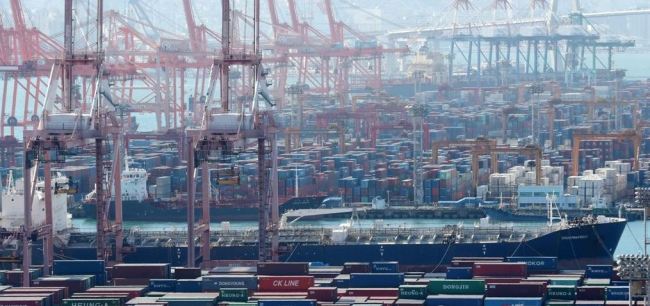The South Korean government on Tuesday approved the waiving of preliminary feasibility studies for 23 nonmetropolitan infrastructure projects worth 24.1 trillion won ($21.6 billion), as part of its mid- and long-term blueprint to encourage balanced regional growth.
It also unveiled a five-year, 175 trillion won development plan that focuses on increasing the number of jobs in rural areas and the population of rural areas.
“The government’s strategic investments are crucial in order to establish the foothold for regional growth,” said Deputy Prime Minister and Finance Minister Hong Nam-ki at a press briefing at the Sejong Government Complex.
Of the total budget, a majority of the 20.5 trillion won sum was allocated for social overhead capital projects, with only 3.5 trillion won set aside for research and development, according to the government press release.
The list of beneficiary projects includes an inter-Korean railway construction project worth 4.7 trillion won to connect South Gyeongsang Province’s Gimcheon and Geoje, allowing the southern cities easier access to the metropolitan region. Also, some 3.1 trillion won will be spent on expanding the conventional railway to a four-track system along the Pyeongtaek-Osong section, the bottleneck intersection spot in the Gyeonggi-Chungcheong zone.
“The latest decision is not a short-term pump-priming action but a long-term policy plan to achieve balanced growth,” Hong said.
The government’s expanded spending on SOC projects triggered speculation that the progressive Moon Jae-in administration may have altered its policy direction amid the prolonged slowdown of the domestic economy. Unlike his conservative predecessors, especially former businessman Lee Myung-bak, Moon so far has prioritized welfare expenses over fiscal spending on SOC.
“The decision is in line with (Moon’s) state affairs direction as balanced growth is a key initiative,” Hong said.
“The list of (exempted) projects not only includes SOC but also R&D investments and projects that are closely connected to regional residents’ daily lives, such as medical services and (projects to preserve the) environment.”
Preliminary feasibility studies were introduced in 1999 to minimize the waste of state resources by assessing the potential benefits of a given state-led project that is expected to cost 50 billion won or more and to require financial support of 30 billion won or more.
Critics said the government should be more careful about eliminating the feasibility study process, pointing to their role in reducing wasteful expenditures.
A further source of controversy is the fact that most of the beneficiary regions are currently under the influence of the ruling party, giving rise to suspicion that the government and ruling party are seeking to win over voters in their regional base ahead of the general elections slated for April next year.
Meanwhile, the Ministry of Trade, Industry and Energy came up with a midterm balanced development plan, focusing on job creation in nonmetropolitan zones.
Over the next five years, the government plans to spend 113 trillion won of the national budget and 42 trillion won from regional administrations to raise 175 trillion won in total.
Under the plan, jointly announced by the Presidential Committee on Balanced National Development, regions are to receive customized support to improve their transportation infrastructure, industrial bases and quality of life, according to the ministry.
By Bae Hyun-jung ([email protected])


